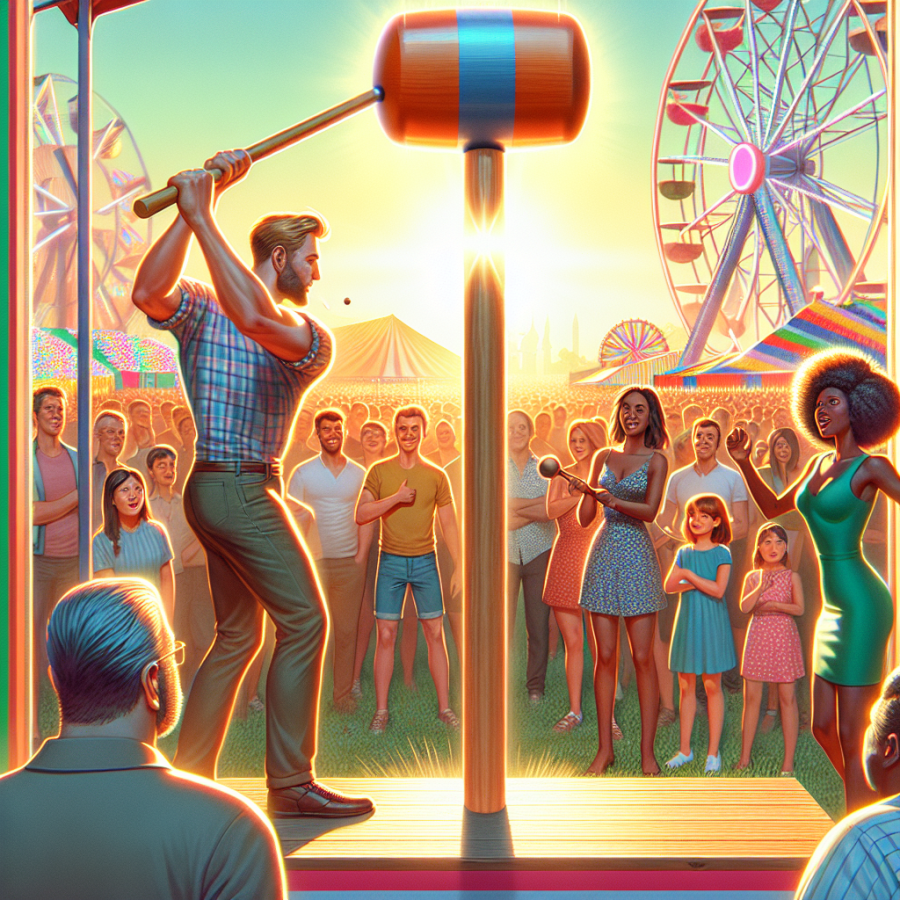Unraveling the Charm of High Striker Challenges
Unraveling the Charm of High Striker Challenges
When one thinks of carnivals, fairs, and amusement parks, the iconic High Striker game is a staple attraction that never fails to gather a crowd. This age-old challenge has been testing the strength and skill of participants for generations, and its popularity endures due to the raw simplicity and visual spectacle it offers.
The concept of the High Striker, also known as the strength tester, is straightforward: wield a mallet, strike a lever, and send a puck or weight soaring up a tower to hit a bell. Despite this simplicity, the game provides a multifaceted appeal that extends beyond the brute force it seemingly requires. The challenge of the High Striker lies in technique as much as in strength. A well-aimed and skillfully executed hit can often outperform one that relies solely on raw power. It is this combination of skill and strength that makes each attempt a gripping display for the audience and a thrilling trial for the participant.
The allure of High Striker also stems from the classic theme of heroism. Many are drawn to the game by the desire to prove their might or to impress friends and family. As participants take their turn, onlookers are often treated to displays of bravado and camaraderie, contributing to the lively atmosphere of the fairground. The High Striker acts as a modern-day test of valor, providing a tangible goal that can be conquered before an audience, thus amplifying the social aspect of the challenge.
Furthermore, the High Striker games have evolved over time to become more inclusive and appealing to a broader demographic. Variants of the game offer different weight levels and hammer sizes to accommodate children and individuals who may not have the brute strength traditionally associated with the game. This inclusivity ensures that everyone can participate in the excitement and enjoy the sense of achievement that comes from ringing the bell.
The visual elements of the High Striker also play a significant role in its charm. Brightly colored towers, flashy lights, and the resounding clang of a successfully struck bell captivate the senses and draw in passersby. The game also provides a fantastic photo opportunity, often becoming a memorable moment for families and groups of friends as they capture their attempts to ring the bell.
Moreover, the High Striker offers players a break from the high-tech, screen-based amusements that dominate much of modern entertainment.
Measuring Might: The Thrilling Appeal of High Striker Competitions
High Striker competitions, often associated with fairs and carnivals, offer more than just a fun way to test one's strength; they encapsulate an experience that strikes a chord with our competitive spirits. These contests are not merely games of chance but rather battles of brawn that allow individuals to measure their might against both the machine and other participants.
The appeal of High Striker competitions lies in their simplicity and the immediate feedback they provide. A player takes a swing with a mallet, striking a lever that sends a puck soaring up a tower to ring a bell, signaling a successful hit. The resounding clang of the bell is not just an indicator of strength; it's a public declaration of prowess that onlookers cannot ignore. This straightforward test of physical power is universally understood, making it a compelling challenge for people of all ages and backgrounds to engage in.
From a psychological perspective, these games tap into our innate desire for dominance and achievement. The traditional High Striker apparatus, towering over the carnival grounds, beckons passersby with the lure of proving themselves. The vertical scale of the game symbolizes the hierarchy of strength, where the higher the puck goes, the more impressive the feat. The act of rising to the challenge in front of a crowd adds a social dimension to the experience, often evoking a sense of camaraderie among participants and audience members alike.
Furthermore, High Striker competitions have evolved to embrace modern technology, enhancing their thrill factor. Digital displays now complement some setups, providing instant metrics on impact force or puck height, adding a new layer of competition. Participants can compete not only for the clang of the bell but also for numerical bragging rights, which can be particularly appealing in an age where quantified self-improvement is in vogue.
The competitive aspect of these games is amplified during organized tournaments or challenges, where individuals can compete for prizes or titles. Here, strategy and technique become just as important as raw power, encouraging return players to improve their skills. Seasoned competitors understand that it's not just about how hard you hit, but also how accurately you strike the target. This subtlety in skill requirement adds a layer of depth to what might otherwise be mistaken for a simple carnival game.
High Striker competitions also serve as a bonding activity. They can be found at corporate events, where colleagues cheer each other on, breaking down formal workplace barriers and fostering team spirit in a fun and informal setting.




